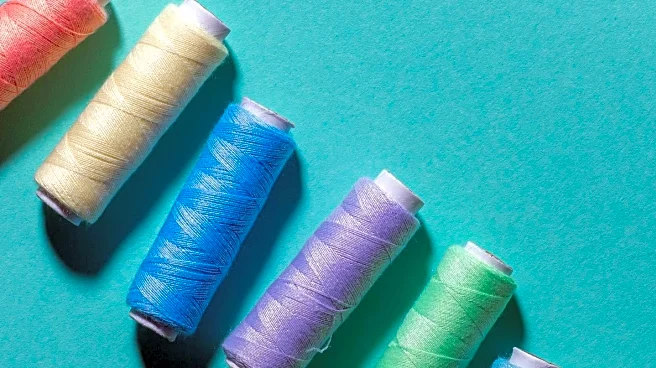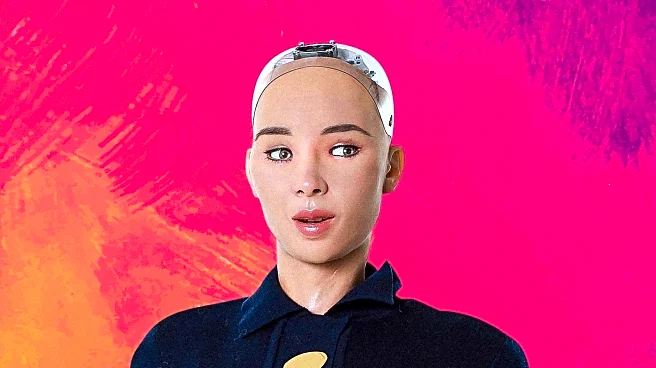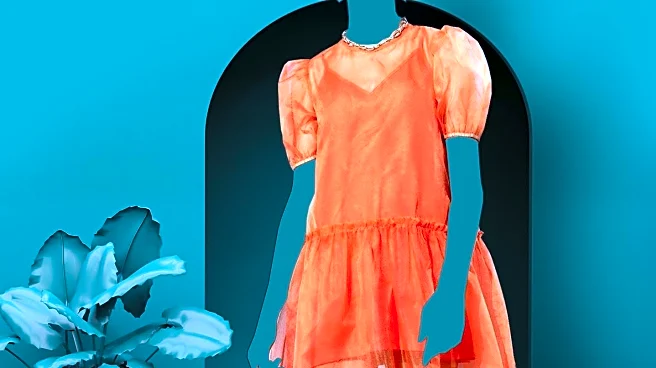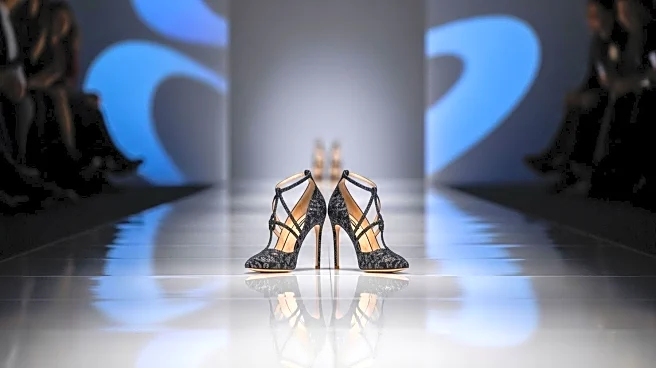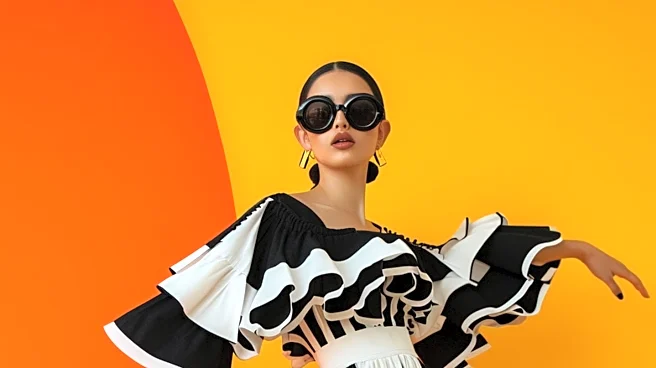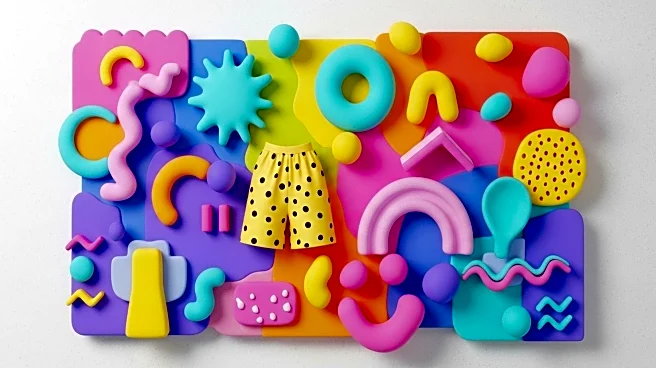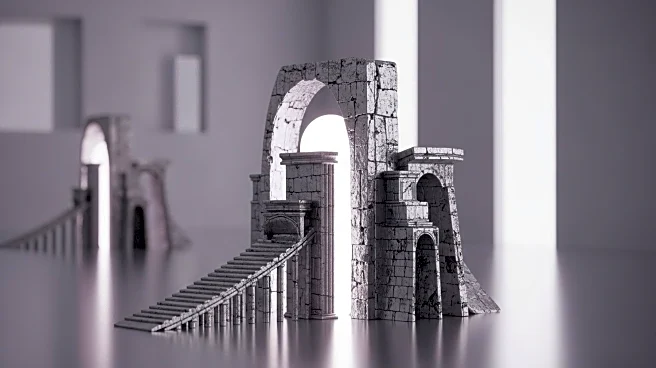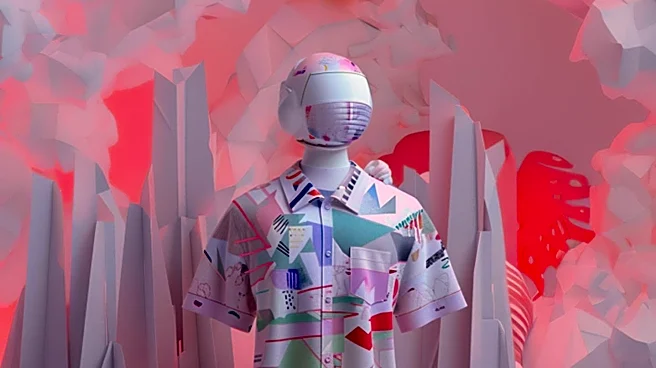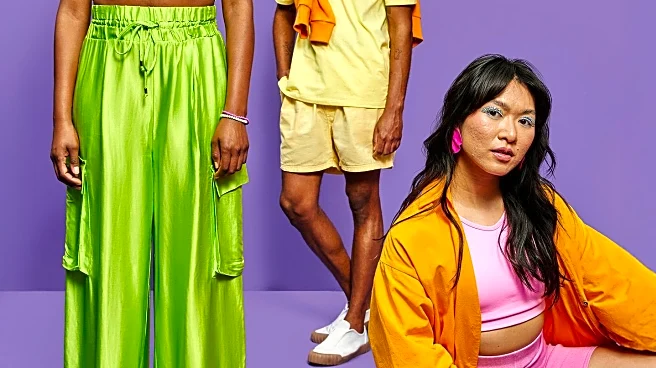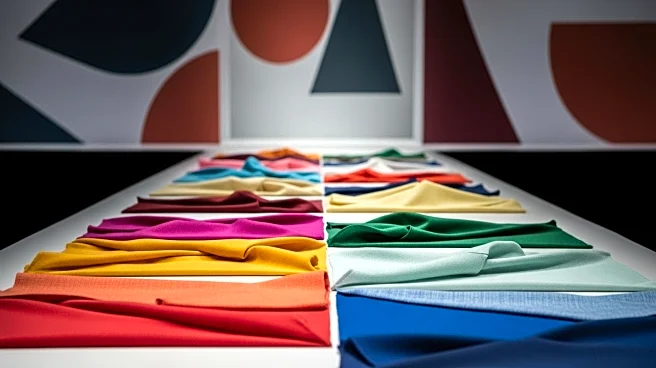What is the story about?
What's Happening?
PH5 designers Zoe Champion and Wei Lin have unveiled their Spring 2026 Ready-to-Wear collection, focusing on innovative use of UV-reactive yarns and no-waste programmed knits. The collection draws inspiration from natural light and shadows, as Champion explored the movement of light in her new apartment. This exploration led to patterns resembling cyanotypes and interactive dresses that reveal hidden prints when exposed to sunlight. The collection also features hand-crocheted flowers and a soft-relief knit technique, aiming to celebrate nature's quiet beauty.
Why It's Important?
The PH5 Spring 2026 collection highlights the growing trend of sustainability and innovation in fashion. By using UV-reactive yarns and no-waste production methods, PH5 is contributing to environmentally conscious fashion practices. This approach not only reduces waste but also offers consumers interactive and unique clothing experiences. The collection's emphasis on nature and light reflects a broader cultural shift towards appreciating and integrating natural elements into daily life, potentially influencing future fashion designs and consumer preferences.
What's Next?
PH5's continued focus on expanding their offerings with impactful designs suggests further exploration of sustainable materials and techniques. As the fashion industry increasingly prioritizes eco-friendly practices, PH5 may inspire other designers to adopt similar methods. The interactive nature of their UV-reactive dresses could lead to new consumer engagement strategies, encouraging brands to create more personalized and experiential fashion items. Future collections may continue to explore the intersection of technology and nature, pushing the boundaries of traditional fashion design.
Beyond the Headlines
The use of UV-reactive yarns in fashion raises questions about the role of technology in personal expression and the potential for clothing to become a medium for interactive art. This innovation challenges traditional notions of fashion as static and opens up possibilities for garments that change and adapt to their environment. As consumers seek more personalized and dynamic experiences, the integration of technology into fashion could redefine how individuals interact with their clothing, leading to new forms of self-expression and creativity.
AI Generated Content
Do you find this article useful?
